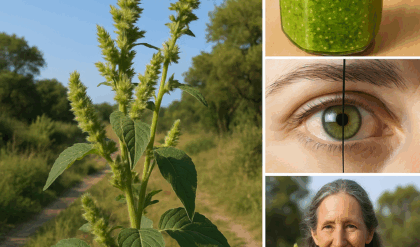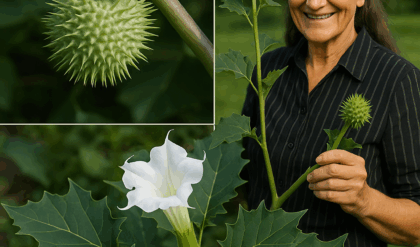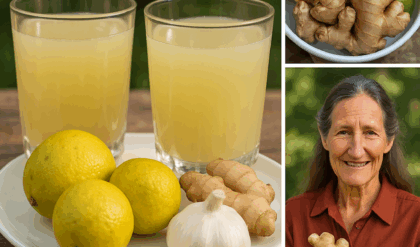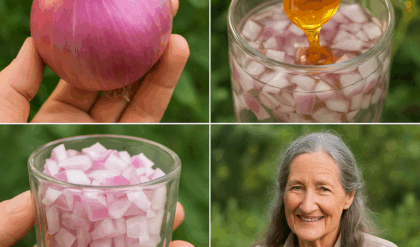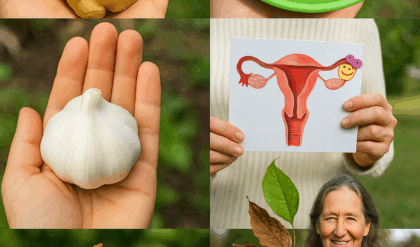Imagine stumbling upon a flower in a misty forest that looks ordinary at first glance, but when raindrops touch its petals, they transform into something magical—turning completely transparent, revealing a delicate, skeletal structure beneath. This captivating phenomenon belongs to the Skeleton Flower, a rare and enchanting plant that has intrigued botanists, gardeners, and nature enthusiasts alike. Known scientifically as Diphylleia grayi, this flower, often called the Glass Flower or Umbrella Plant, thrives in the cool, shaded forests of northern Japan, China, and even parts of the Appalachian Mountains in the United States. What makes this flower so special, and how can you grow it in your own garden? Let’s dive into the mesmerizing world of the Skeleton Flower and uncover its secrets.
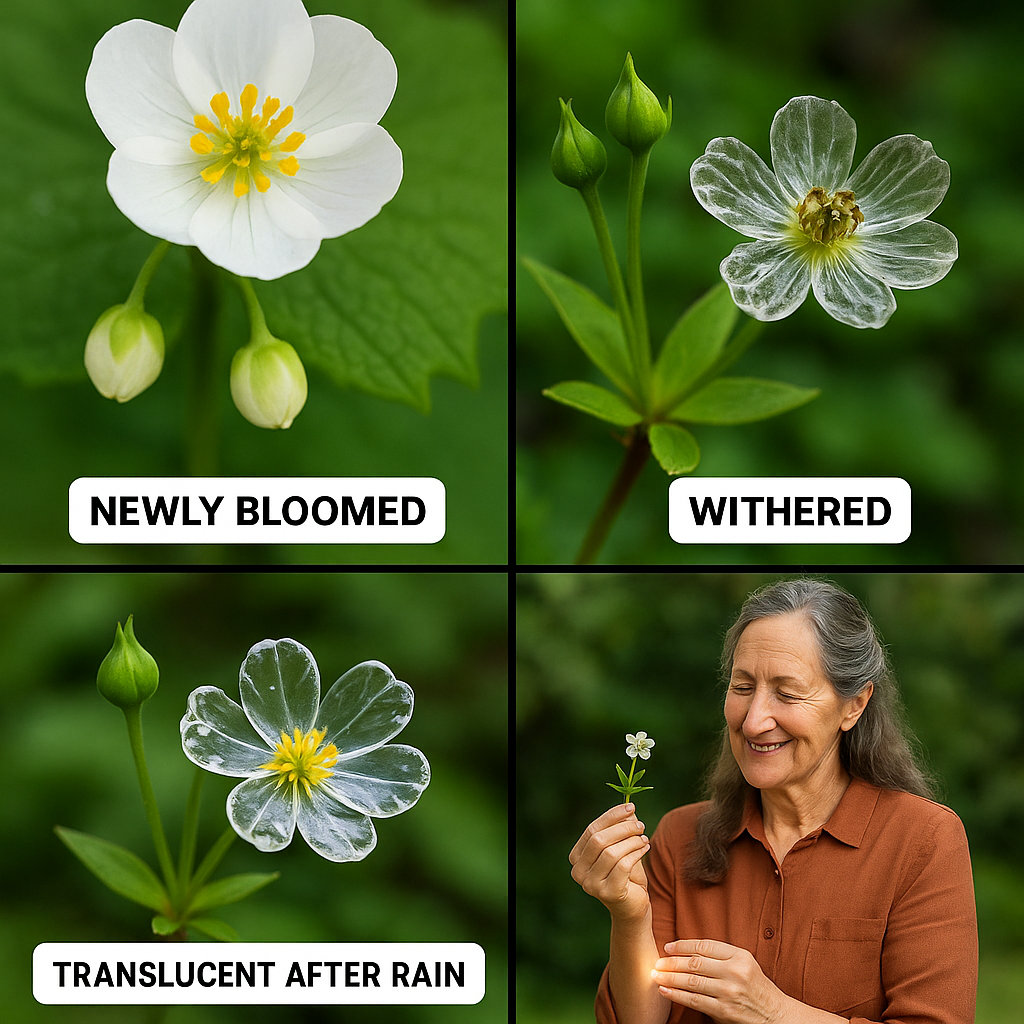
🌸 What Makes the Skeleton Flower So Unique?
The Skeleton Flower is a perennial in the Berberidaceae family, celebrated for its extraordinary ability to change appearance in the presence of water. When dry, its petals are a soft, opaque white, scattering light due to air pockets within their loose cell structure. However, when water—like rain or morning dew—comes into contact with the petals, it fills these air spaces, allowing light to pass through and turning the petals transparent. This reveals the intricate vein structure beneath, resembling a skeleton, which is how the flower earned its hauntingly beautiful name. As the petals dry, they revert to their opaque white state, ready to transform again with the next rainfall.
This natural magic isn’t just for show—it’s believed to be an evolutionary adaptation. By becoming transparent during rain, the flower may blend into its surroundings, deterring herbivores or pests in its damp forest habitat. Beyond its visual appeal, the Skeleton Flower produces clusters of small, dark blue or purple berries with a powdery white coating after blooming, adding another layer of charm to this woodland gem.
🌿 Where Does the Skeleton Flower Thrive?
Diphylleia grayi is native to the cool, humid forests of northern Japan and China, often found in the understory of deciduous woodlands. It also grows in select regions of the Appalachian Mountains, favoring shaded, moist environments. Blooming from late spring to early summer (May to July), the plant reaches a modest height of about 0.4 meters (1.3 feet). Its heart-shaped, umbrella-like leaves and delicate white flowers make it a perfect ground cover for shady gardens, where it attracts pollinators like beetles and flies with its unique transformation.
🌱 Growing Skeleton Flowers: Tips for Your Garden
If you’re dreaming of adding this magical plant to your garden, the Skeleton Flower can be a rewarding choice, though it requires specific conditions to thrive. Here’s how to grow and care for it:
Soil and Location
Skeleton Flowers prefer well-draining, slightly acidic to neutral soil rich in organic matter, mimicking their forest floor habitat. Plant them in partial to full shade—direct sunlight can scorch their delicate leaves and flowers. A spot under taller plants or trees works perfectly, providing the dappled light they love.
Watering and Care
Keep the soil consistently moist but not waterlogged, as these plants thrive in humid conditions. They’re drought-sensitive, so regular watering is key, especially during dry spells. Mulch around the base to retain moisture and keep the roots cool. Skeleton Flowers are slow-growing but long-lived if conditions are right, making them a low-maintenance addition once established.
Propagation
The best way to propagate Diphylleia grayi is by dividing its rhizomes in early spring. Dig up the plant carefully, separate the rhizomes, and replant them in prepared soil. Growing from seed is possible but challenging, as seeds require cold stratification (a period of cold, moist conditions) to germinate, often taking months to sprout.
🍃 The Benefits of Skeleton Flowers Beyond Beauty
While the Skeleton Flower is primarily grown for its aesthetic appeal, it offers ecological benefits that make it a valuable addition to any garden. As a ground cover, it helps retain soil moisture and suppress weeds in shaded areas, creating a healthier ecosystem for other plants. Its flowers attract pollinators, supporting biodiversity by providing food for beetles, flies, and other insects during its blooming season.
In traditional herbal medicine, some cultures have used Diphylleia grayi for its mild anti-inflammatory properties, attributed to compounds like podophyllin, as noted in botanical research from the 1960s. However, modern studies on its medicinal benefits are limited, and it’s not widely used for health purposes today. Its primary value lies in its ecological role and the awe-inspiring beauty it brings to gardens, especially during rainy seasons when its transparency is on full display.
🌧️ The Skeleton Flower in Nature and Culture
In northern Japan and China’s forests, the Skeleton Flower is a symbol of nature’s quiet magic, often spotted during the rainy season when its petals shimmer like glass. While social media has popularized the flower with sometimes exaggerated, AI-enhanced images, the real-life transformation is subtler but equally mesmerizing. The petals don’t become fully invisible but take on a translucent quality, showcasing their delicate veins in a way that feels almost otherworldly.
🌼 Why You Should Grow the Skeleton Flower
The Skeleton Flower is a perfect choice for gardeners looking to add a touch of wonder to their shaded spaces. Its low-maintenance nature, unique water-induced transparency, and ecological benefits make it a standout addition to any backyard. Whether you’re a seasoned gardener or a beginner, this plant offers a chance to connect with nature’s mysteries, providing a living spectacle every time it rains.
To ensure success, mimic its natural habitat with moist, shady conditions, and be patient—it’s a slow grower but worth the wait. While its health benefits are not extensively documented, the joy of watching its petals turn transparent is a reward in itself, making Diphylleia grayi a true gem for nature lovers. If you ever find yourself in the forests of northern Japan or China during a gentle rain, keep an eye out for this ethereal bloom—it’s a sight you won’t forget.
Word count: 752
Disclaimer: The Skeleton Flower is not a substitute for medical treatment. Consult a healthcare professional before using any plant for medicinal purposes.
